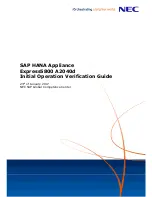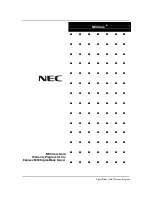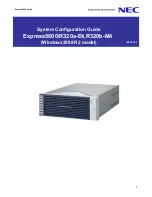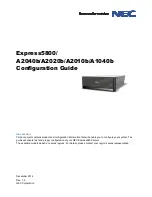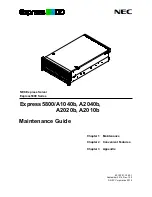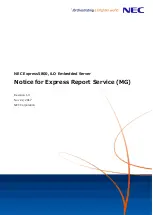
Chapter 2. Introduction to IBM System Storage DS3500
21
Draft Document for Review March 28, 2011 12:24 pm
7914DS3KIntro_081410alw.fm
source for a backup operation. They can also be used to simply and quickly roll back to an
original data state, thus providing a restore point. However, if the source logical drive is lost,
the point-in-time FlashCopy will be lost as well. For more information about FlashCopy, see
IBM Midrange System Storage Copy Services Guide, SG24-7822.
As part of the standard configuration, two FlashCopies are enabled on every DS3500 storage
subsystem and this Premium Feature enables up to 64 FlashCopies. A maximum of eight
flashcopies can be created on a single logical drive.
DS3000 VolumeCopy License
VolumeCopy is a way to provide a complete point-in-time copy of a source logical drive. As
opposed to FlashCopy (where only the original values of changed data are copied to the
repository), the whole source logical drive is copied to target. You can use this functionality for
data replication, relocation, backup, or to restore snapshot data to the original logical drive.
The time required to establish a copy will depend on the size of the source data and the
operation priority settings. While establishing the copy, the source logical drive will be in
read-only state.
Once all the data is copied to the target, the target will remain available if the source logical
drive is lost. For more information about VolumeCopy, see IBM Midrange System Storage
Copy Services Guide, SG24-7822.
The VolumeCopy Premium Feature allows for up to 128 VolumeCopies. Be aware that
FlashCopy is a prerequisite for VolumeCopy.
DS3000 FlashCopy VolumeCopy License
As stated above, the FlashCopy Premium Feature must be enabled before you can enable
and use VolumeCopy. For this reason, IBM provides the FlashCopy VolumeCopy license; this
is actually a bundle of both Premium Features.
DS3000 Enhanced Remote Mirroring ERM
With the DS3500 and DS3950 ERM provides a way to create a remote image copy of a
source logical drive. This capability is frequently used for the creation of a disaster recovery
site located in a different location some distance from the primary location. ERM provides
three different mirroring modes to chose from:
synchronous - Provides mirroring capability in the metro (campus) environments,
generally within 10 mile radius. Requires a low latency network as mirroring must
complete before the primary completes the acknowledgement to the host.
asynchronous with write order consistency group - Provides mirroring capability in the
global environments, generally over 10 mile distances, where latency may exceed
acceptable response times for the primary host IO operation. IO operations are handled in
the order of their original request across the selected logical drives who are grouped
together through the use of a consistency group.
asynchronous copy - Provides copying capability in the global environments, generally
over 10 mile distances, where latency is high and bandwidth is limited causing a high
backup of IO which may impact the principle operation site. IO’s in this mode are not
guaranteed to be processed in order received across a number of logical drives. exceed
acceptable response times for the primary host IO operation.
Note: Flashcopy does not provide a permanent full image copy for recovery use. For this
functionality you must use the VolumeCopy feature.
Summary of Contents for DS3500
Page 2: ......
Page 5: ...iii Draft Document for Review March 28 2011 12 24 pm 7914edno fm ...
Page 789: ......


































